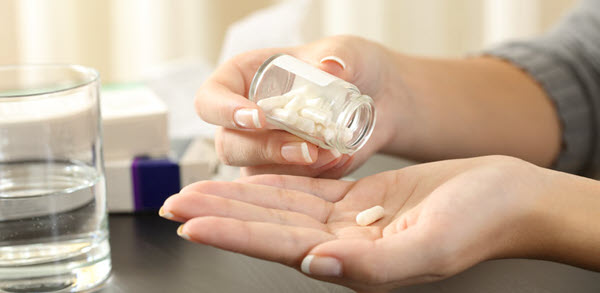
Simple disclosure from me regarding lithium: I’m a big fan of the drug.
First off, lithium is a salt substance, and in the 1940s was tried as a salt substitute – although people were totally unaware of lithium’s toxic properties. Fast forwarding to 1949, doctors happened upon the discovery that lithium had medical properties, and that it could be used to treat bipolar disorder and non-bipolar (unipolar) depression.
Today, lithium has 2 primary psychopharmacological uses:
- In bipolar disorder, it’s used to manage mania and depression, and when averaging out the results of the agents primarily utilized to treat the bipolar spectrum, lithium prevents bipolar reoccurrences better than any other treatment available.
- In unipolar depression, lithium can augment traditional antidepressants such that they actually work better.
Lithium is also used to manage angry outbursts, aggressive tendencies, and to enhance the actions of antipsychotics in the treatment of the psychotic spectrum disorders. It is one of the better tolerated anti-manic medications even at higher dosing ranges, causing less fatigue than the atypical antipsychotics, and also less weight gain and concentration problems.
Lithium dosing is tightly linked to blood levels, so monitoring is a must. A safe lithium blood level is 0.6mEq/L – 1.2mEq/L, thus its dosing is very scientific. How lithium performs then, is highly dose-dependent.
I like to break down lithium dosing into 4 categories:
- Low-dose lithium use. Small doses of lithium help stave off dementia and have some anti-aging effects, but are entirely too sub-clinical to treat anything meaningful in psychiatry. The dosage range here is 10mg – 150mg.
- Medium–dose lithium use. This is the dosing level for bipolar and unipolar depression. The target blood level sought here is 0.6 – 0.8 but should be adjusted according to patient circumstances. For example, older adults can do just fine with lithium levels on the lower side because their brains tend to absorb lithium more readily.
- High-dose lithium use. This is the dose for managing mania with levels of 0.8 – 1.2.
- Toxic dose. Toxicity most often occurs at levels exceeding 1.2. Symptoms of toxicity are severe tremor, imbalance, coordination difficulties and marked mental confusion. This is an important potential danger for patients and prescribers to understand. Toxicity occurs primarily through drug interactions. Patients should be made aware that medications for blood pressure, certain antibiotics, and non-steroidal anti-inflammatory drugs (NSAIDS) such as Motrin and Aleve are all possible culprits. Tylenol and aspirin are OK to use.
A particularly noteworthy property of lithium is that it prevents suicide. No other medication for managing mood disorders does this. I’ve seen clients who have struggled with suicidal ideation their entire life, who have been liberated from living under the cloud of these dark, ominous thoughts by lithium.
So who responds best to lithium? The answer is people with classic, textbook bipolar disorder associated with clear episodes of mania or hypomania, clear episodes of accompanying depression, and a return to normalcy between episodes. In such classic cases, people feel more stable, sleep better and generally like how lithium works for them.
The most common side effects of lithium are nausea, tremor and thirst. Because lithium is a salt, users tend to drink more. It is not associated with significant weight gain and is not addictive, but should never be stopped abruptly.
The two most common medical risks associated with lithium are hypothyroidism and kidney dysfunction. For those taking lithium for a lifetime, there’s about a 10 percent chance of developing hypothyroidism. Low thyroid levels are linked to depression, weight gain and sluggishness, so it’s important for lithium users to have their thyroid checked while on the drug – particularly if a new dysphoria emerges. Hypothyroidism is generally easy to correct with thyroid replacement. Although much more rare than hypothyroidism, renal problems are definitely more serious. Lithium can slow down kidney function, but there is evidence that if its level is kept at or below 0.8, renal difficulties don’t develop.
Lithium decreases the risk of stroke and has excellent antiviral properties demonstrated against herpes outbursts and numerous other viruses.
The bottom line with lithium: It’s a life-changer for many people with classic bipolar disorder and depression, but it’s hard to decipher who they are prior to its use. So if other drug options have been exhausted, it’s certainly worth a trial. An added bonus is that its success in managing mania in children is also quite strong.
Attribution Statement:
Joe Wegmann is a licensed pharmacist & clinical social worker has presented psychopharmacology seminars to over 10,000 healthcare professionals in 46 states, and maintains an active psychotherapy practice specializing in the treatment of depression and anxiety. He is the author of Psychopharmacology: Straight Talk on Mental Health Medications, published by PESI, Inc.
To learn more about Joe’s programs, visit the Programs section of this website or contribute a question for Joe to answer in a future article: joe@thepharmatherapist.com.